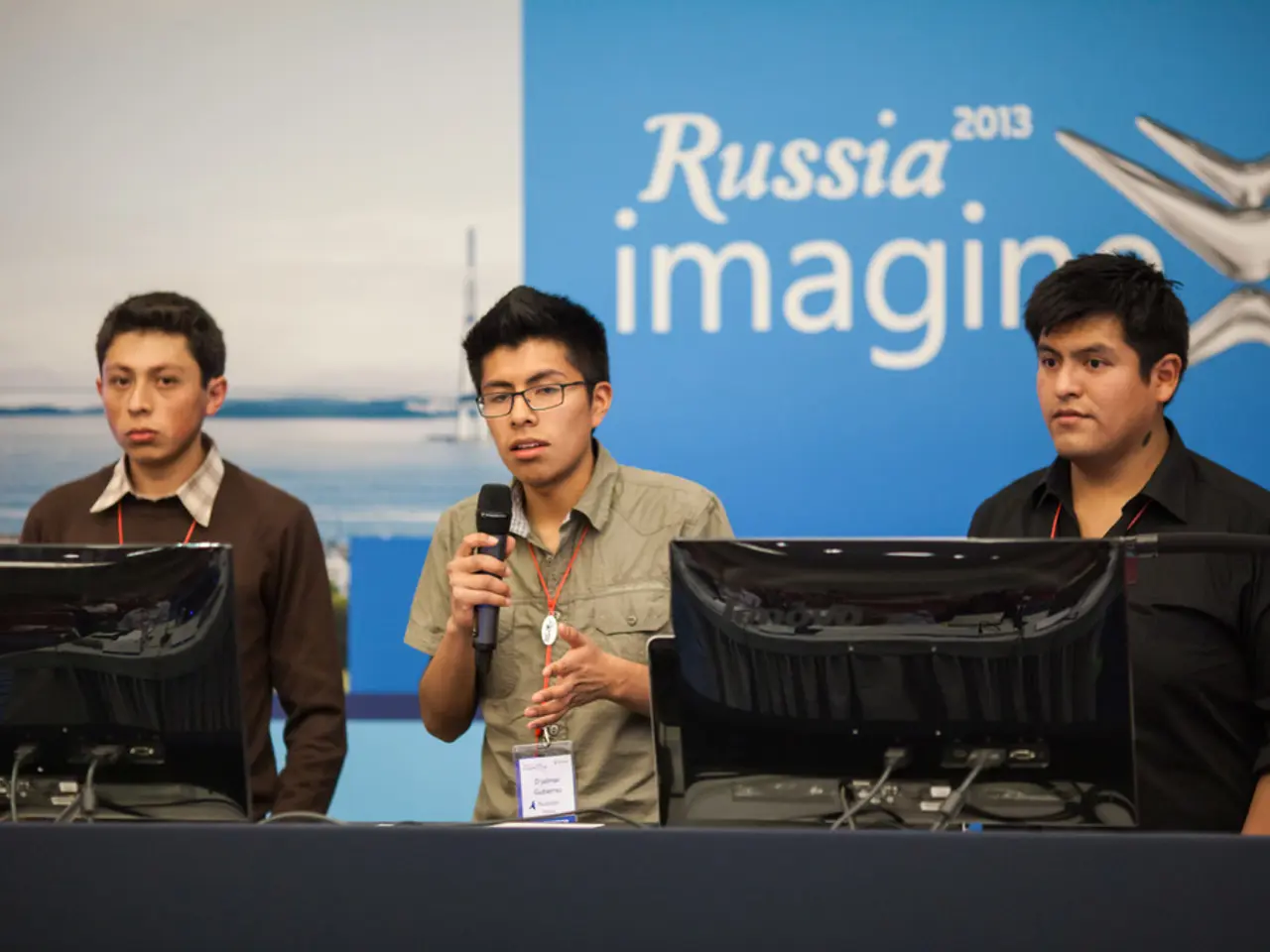Tech Talent Hiring Landscape in 2024: Exposed Insights and Tactics Discussed
Transformative Impact of AI on Global Workforce: Upskilling Over Recruitment
In the latest edition of "The State of Tech Talent," the transformative impact of on-demand, generative AI on the global workforce is explored. The report, first introduced in 2023, sheds light on innovative approaches to bridging the AI talent gap, focusing primarily on upskilling existing employees rather than external recruitment.
According to the report, 97% of surveyed companies worldwide are incorporating AI into their operations or products. However, 69% of HR leaders are grappling with the scarcity of AI-proficient talent. To address this issue, organizations are 3.2 times more likely to invest in upskilling existing talent than to hire externally, as hiring externally takes 62% longer than upskilling current staff.
Companies are prioritizing portfolios showcasing practical work, with open source contributions serving as proof of technical skills and collaboration abilities. New AI-specific roles are emerging, prompting organizations to develop targeted training for positions such as AI & ML Operations Engineer, AI Product Manager, AI Quality Assurance Engineer, and Prompt Engineer.
The key to filling tech talent needs lies in democratizing access to emerging AI tools and empowering every employee with the know-how to use them. Workplace transformation includes integrating AI tools into daily workflows while addressing workers' concerns and enthusiasm by offering transparent communication and training on AI's productivity benefits.
The report also emphasizes a skills-first approach for filling tech talent needs. Companies are forming partnerships with educators to cultivate new AI talent pipelines. The institution mentioned in the article has trained over 100,000 learners worldwide since 2011 to address tech sector challenges.
The demand for AI and automation talent has doubled despite slowed tech hiring overall, indicating that investment in AI literacy and governance as part of workforce development is crucial. The report encourages organizations to get in touch with the institution's team for tech training and talent solutions.
Moreover, the report "State of Tech Talent 2024" highlights persistent hurdles in sourcing talent and fostering diversity in the traditional tech talent pipeline. Degree requirements are being dropped for open roles by some companies, and there is a growing emphasis on a diverse and inclusive workforce.
The average North American firm is spending $23,247 to fill AI roles. To combat this, companies are increasing their hiring budgets to address the AI talent gap. 91% of HR leaders report that qualified applicants are demanding higher salaries, and 66% of companies are willing to pay higher salaries.
In conclusion, the report underscores a strategic pivot toward continuous learning and internal development to close critical talent gaps in AI. Skill-building initiatives and hands-on experience are central pillars of bridging the AI skills shortage. The report "State of Tech Talent 2024" is available for download for anyone interested in learning more about these innovative approaches.
Lastly, it's worth noting that ChatGPT became the fastest-growing consumer app in history, reaching 100 million weekly users and achieving a 90% saturation rate at Fortune 500 companies within its inaugural year. This rapid adoption of AI technology underscores the importance of these strategies for the future of work.
[1] The State of Tech Talent 2024 report [2] The State of Tech Talent Acquisition report [3] Various industry reports on AI talent gap and workforce development trends
- To address the increasing demand for AI and automation talent, many organizations are prioritizing internal skill development, investing in upskilling existing employees by 3.2 times more than hiring externally, as demonstrated by the findings in the "State of Tech Talent 2024" report.
- As AI integration becomes widespread in diverse sectors such as software engineering, data science, finance, business, technology, and education-and-self-development, it is crucial for businesses to provide their employees with the necessary AI literacy and hands-on experience.
- Strategic pivots towards continual learning and internal development can help minimize the critical talent gaps in AI, as emphasized by the reports, including "The State of Tech Talent Acquisition" and various industry reports on the AI talent gap and workforce development trends.




